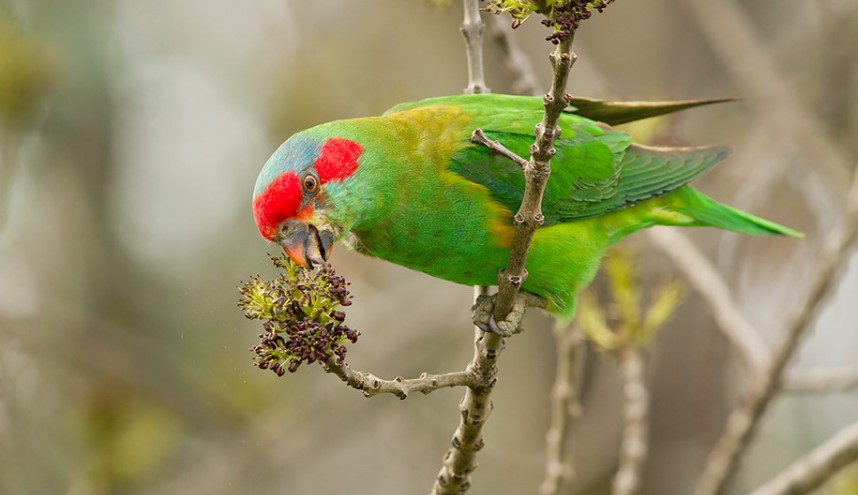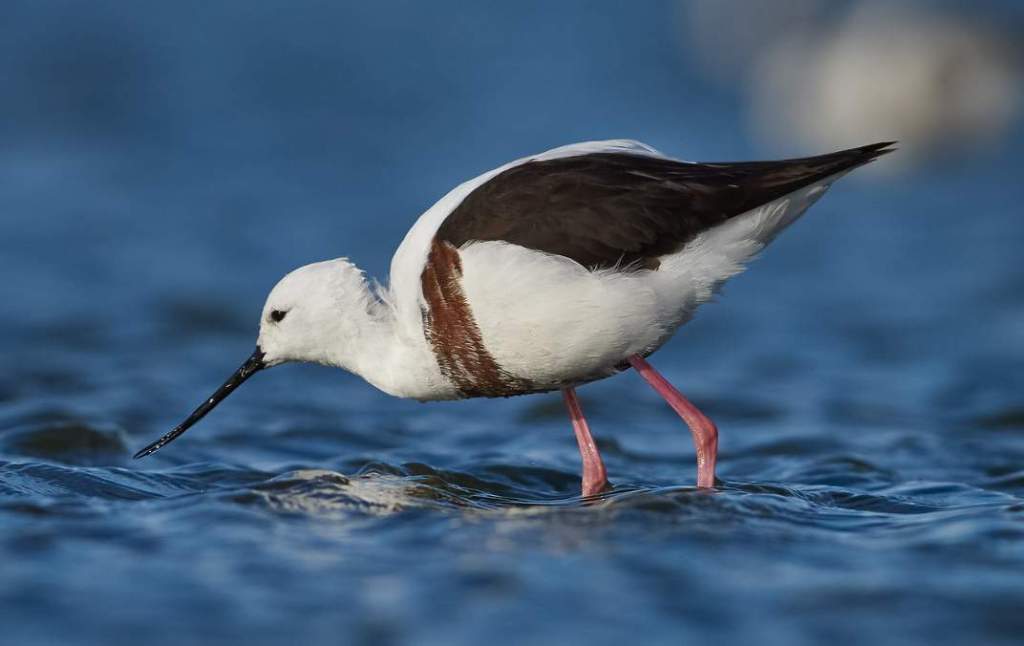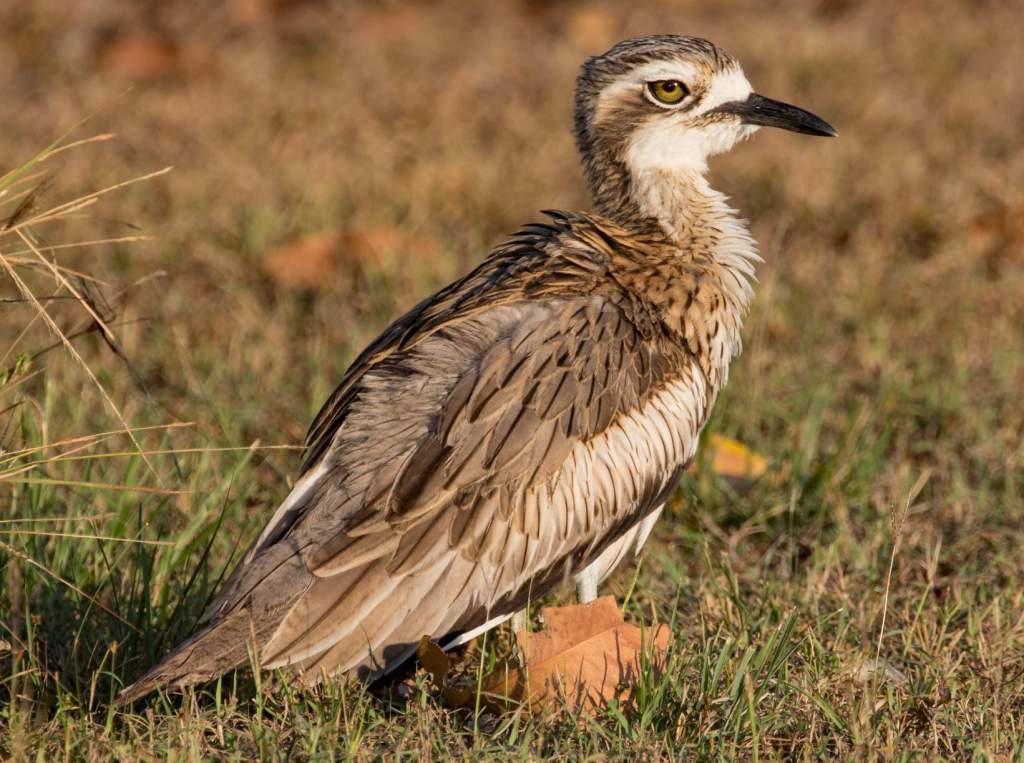DISTRIBUTION: New Britain Sparrowhawk (Accipiter brachyurus) is an Australasian species that is little known and generally regarded as rare, but may well be more common than the few records suggest. Like the slaty-backed goshawk, it was long thought endemic to New Britain (the second-largest island of Papua New Guinea); in the 1990s, it was also discovered in southern New Ireland (still part of the Bismarck Archipelago), where it was the least uncommon raptor in the montane forests.
HABITAT: Lives in tropical to subtropical moist forest, also forest edge and partly cleared areas, in New Britain; montane forest in New Ireland. Sea-level to 900+ m in New Britain, at an altitude of 1,200–1,800 m in New Ireland. The major threat to this species is habitat destruction, eventually declining its number in lowland forests.
IDENTIFICATION: New Britain Sparrowhawk is small to smallish accipiter, blackish, gray, and rufous as an adult. It has a fairly heavy bill, long, thin legs, and toes, relatively pointed wingtips, and a very short tail. Both sexes are similar, but females may be nearly 20% larger; juveniles are distinct.
Some juveniles molt into the distinct immature stage, but identification was based on the combination, with immature plumage, of the rufous collar, barred breast, and dark red eyes not found in any other known New Britain accipiter. In view of paucity of knowledge of that island’s raptors, perhaps description may refer to molting juvenile of as yet undescribed species.
Perched Adult All plain dark slate above, with blacker crown and greyer cheeks, apart from bright rufous nuchal collar; mainly pearl-grey below, shading into white crissum, but throat greyish-white and sides of chest tinged rufous. Juvenile Rufous above, with blackish blotches from dusky feather centers and dusky bars on the slightly grey-tinged tail.
But crown blacker with narrow rufous edges and some white showing through, particularly on nape; cream to pale buff below with broad and diffuse brown streaks, these becoming drops and arrowheads on the abdomen and wavy bars on thighs. (Supposed immature stage: dark brown above with darker bars, indistinct on the tail, but dark brownish-grey head and rufous collar; white below, barred rufous on breast and wing-linings but not the abdomen.) Bare parts Adult eyes are are dark red and juvenile brown.
Adult is greenish-yellow; juvenile care is greenish. Adult legs are yellow to orange-yellow; juvenile legs are pale yellow. (Supposedly immature, he had dark red eyes and, unexpectedly, orange cere and legs.) Flight Small raptor with accipiter proportions, but short and relatively pointed wingtips and, for this genus, exceptionally short tail; even so, wingspan is only 1.8 times total length.
Adult are all blackish-slate above with rufous collar; and largely gray below, mottled dusky on wing-linings, with slightly darker plain gray tail, contrasting white undertail covers, and whitish-barred flight-feathers tinged rufous at the base. Juvenile very rufous above, blotched and barred blackish, with dark head; buff-white below with heavy brown streaks, narrower on wing-linings, and flight-feathers and tail pale rufous with thin dark bars.
Related species: It is a combination of blackish and gray with a rufous collar, as well as red eyes and yellow legs that should be unmistakable, while the very rufous juvenile is also distinctively streaked below. Four other accipiters are found in New Britain, though this and New Britain Goshawk are so little known that as yet undescribed accipiters may well still await discovery in this or other forested parts of the Indonesian and Papuan areas, where nearly 30% of all accipiters are endemic.
Of these, Slaty-backed sparrowhawk is most similar in size and pattern but has more rounded wings, a slightly longer tail, creamier underparts, richly orange eyes, and legs, and no rufous collar, while juveniles are ‘kestrel-patterned’ above and heavily barred rufous and brown below. Not dissimilar in appearance, at least as an adult, the New Britain Goshawk is clearly larger, paler above and white below, again with orange eyes and legs.
There are two species, the New Britain race (dampieri) of widespread Varied Goshawk (adult pale gray and pink, juvenile brown above, streaked and barred below) and much larger and longer-winged Meyer’s Goshawk (adult black and white, usually somewhat streaked and barred below, or all black, juvenile dark brown above, edged rufous, and all rufous-buff below with sparse narrow dusky streaks), that should present no difficulties.
FOOD: Not recorded, but foot structure and a considerable degree of RSD indicate bird-eater.
SOCIOSEXUAL BEHAVIOUR: Probably solitary or in pairs. No description of displays.
BREEDING: New Britain sparrowhawk is a very rare bird, and very little is known about its breeding.
MOVEMENTS: New Britain Sparrowhawk is presumably sedentary, though juveniles may well wander.
POPULATION: New Britain sparrowhawk is a threatened species of bird of prey. Though provisional order of magnitude here puts in the upper hundreds, this rather small forest accipiter could well be somewhat less rare than supposed, and indeed, BirdLife International suggests that it may belong in the 1,000 to 2,499 range. Extensive logging (often followed by planting of oil palms) is destroying its lowland habitats, but the montane forests are not apparently threatened.
Its recent detection in southern New Ireland raises the possibility of further discoveries in both islands. The New Britain population is known from a few records up to at least 900 m’, but perhaps the higher montane forests have not been adequately surveyed. The two islands have a combined area of over 50,000 km2, with significant sections above 1,000 m.
GEOGRAPHICAL VARIATION Monotypic. Forms a superspecies with Collared and Moluccan Sparrowhawks.
MEASUREMENTS. The New Britain sparrowhawk is 27 to 34 cm long.
Other Names:
German: Dreifarbensperber
Spanish: Gavilancito de Nueva Bretaña
French: Épervier de Nouvelle-Bretagne
Italian: Sparviere di New Britain
Dutch: New-Britainsperwer
Polish: krogulec trójbarwny
Swedish: bismarckhök
Weights: No data.
Related Article: Saw-billed Hermit







